Fighting Pain
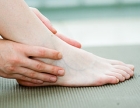
Pain In The Legs / Feet:
All forms of exercise result in some amount of discomfort. When we exercise, our body moves to a set rhythm, over and over, for days, months or even years. Little do we realize that the muscles and joints start to wear out. Sometimes we work against the structure of our bodies and choose an exercise not suitable for our body type. This happens, for instance, when a flat-footed person chooses to run or a person with an advanced arthritic condition starts walking briskly. If you don’t have any health problems and are an avid walker, you can still expect pain, but it need not always be a cause for worry.
Caution: Any pain which persists for more than 72 hours needs immediate medical attention. Here is a list of some common aches that regular walkers experience and how to deal with them.
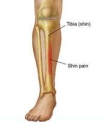
1. Pain In The Shin:
This pain in front of the lower leg is very common amongst beginners. When we walk, we lead the movement with the heel striking the surface and the toes pointed upwards. This movement results in repetitive contractions of the muscles in the lower leg, causing pain in the shin.
Remedy: Soak your legs in a bucket of warm water at the end of the day to relieve the pain. Stretch the muscles by pointing the toes and flexing the feet frequently during the day.
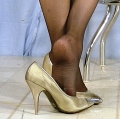
2. Pain In The Arch Of The Foot:
The arch of the foot flattens slightly as we walk. You may experience pain in the arch as the foot rolls, if it is over-developed or if you are wearing shoes with inadequate arch support.
Remedy: Make sure you wear shoes with adequate arch support.
3. Pain In The Heels:
Soreness or persistent pain in the heels can occur if you are not walking right, for instance, if you land your heel heavily on the ground. This kind of pain is more common in people who walk on the treadmill at a very high speed and those who walk on tarred roads.
Remedy: Correct the way you land your heel and wear shoes with adequate heel-cushioning.
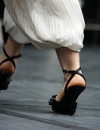
4. Frequent Lateral Twisting Of The Ankle:
Walkers with over-developed arches face this problem and find the foot twisting outwards. Most of the time the foot absorbs the shock without damage, but can leave the ankle area sore and hurting for days. In extreme cases you may need to see a doctor.
Remedy: Wear shoes with lateral support. See a doctor in case of extreme pain or if you find it painful to take weight on the injured foot. Applying ice immediately prevents swelling.
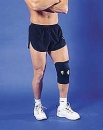
5. Pain In The Knees:
This could be the result of excessive weight, an incorrect walking technique, or a knee joint weakened by age or disease. It can be acute in nature but will disappear with rest. The pain could also arise from the locking of the knee joint in a weight-bearing position.
Remedy: You need to check if the pain is due to a medical condition. Apply an anti-inflammatory ointment. If the pain persists, consult a doctor. Keep the knee joint ‘soft’ (unlocked) as you walk.
6. Pain In The Lower Back:
Weak thigh muscles can lead to a forward tilt of the body while walking, creating excessive stress on the lower back. In some cases, exaggerated side-to-side movement of the hips too can cause a backache. This lateral shift of the pelvis is due to weak gluteal (hip) muscles. A bulky abdomen also puts stress on the lower back and results in pain. A correct walking posture is one where the back is straight, abdomen sucked in, shoulders relaxed and the knees are unlocked.
Remedy: Keep the knees soft as you walk. Strengthen the muscles in front of the thighs, hips, abdomen and the back to correct your posture.

7. Headaches While You Walk:
If there are no medical reasons for it, the headaches can be due to : heat, humidity, dehydration, inadequate rest or overexertion while exercising.
Remedy: Set these problems right by hydrating well before, during and after the walk. Wear a sun-protective head gear during the summer months and cover the head and ears in cold weather. Rest well each night.